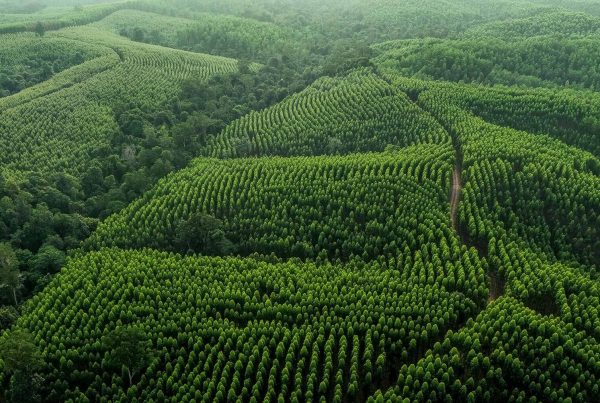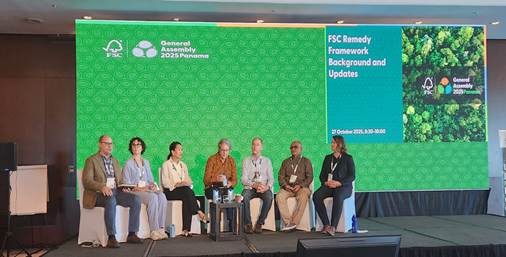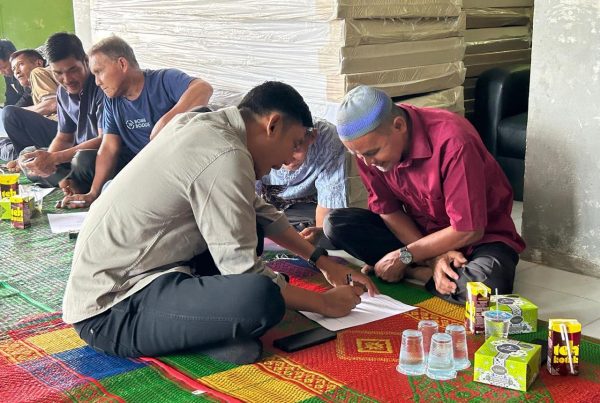Located on the Kampar Peninsula in Riau, Sumatra, Dayun village has a population of 12,000. PT.RAPP obtained a Forest Utilization Business License (PBPH) and officially began plantation operations around Dayun in 2015. The company’s operations in Dayun are part of its Pelalawan plantations, with a total area of 3,554 hectares. PT. RAPP’s Community Development team began running programs in Dayun in 2018, starting with chili agribusiness. The flagship program currently being implemented is the development of watermelon cultivation.
For the Head of Dayun Village, Nasya Nugrik, the FSC remedy process can play an important role in the resolution of past issues while also strengthening relations between the community and APRIL. Nasya has served as the Village Head (Penghulu) of Dayun for 12 years. Under his leadership, Dayun Village received the 2nd Place Award for Best Performing Village (Region I Sumatra) in 2024 from Indonesia’s Ministry of Home Affairs.
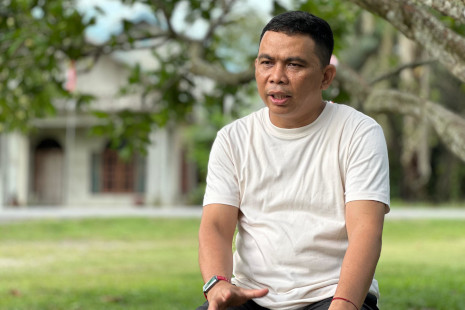
Nasya Nugrik, Head of Dayun Village
He also led Dayun to win 1st Place in the Riau Provincial Tourism Village Competition in 2021, thanks to his efforts to develop local ecotourism potential. According to Nasya, the remedy process also opens opportunities for improving community welfare.
APRIL has supported Dayun Village through community empowerment programs such as the agroforestry and Rumah Batik initiatives. How has this affected the community?
At the very least, we can see the impact from the development of MSMEs (micro, small and medium enterprises). From what was originally just small-scale MSMEs, now there are some that have reached national scale. Community businesses such as batik, workshops, and tailoring started from PT. RAPP trainings, then were supported with tools, then sales, and even further capacity building afterwards. So of course the whole project has a big impact. But can we say it can be directly felt by all of Dayun Village? Not really.
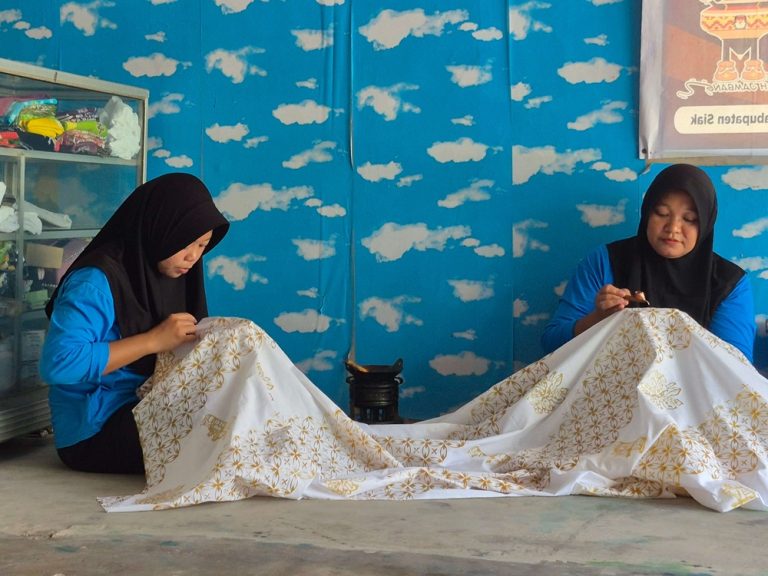
Batik-making at Rumah Batik Seruni, Dayun Village
What is your opinion about the FSC remedy process so far?
In my opinion, the remedy process is becoming repetitive. Honestly, I am sorry to see this. The process itself is already good, it already involves all parties involved in the activities. But why are there delays in reaching the results?
What do you think are the benefits of the FSC remedy for the environment and the community?
The benefit is to bring clarity. This can be clarity in the relationship between the company and the community and how far we can collaborate. In addition, also clarity on the status of the community in relation to the company and the state. That also helps us to understand the position of the company and its responsibilities toward the community. In the remedy process, all of this is made clear.
What kind of social remedy do you think is needed in Dayun?
Personally, for the areas that PT. RAPP has defined as remedy areas, I lean more toward sagu hati {compensation}. For the long term, partnership is good. But if we talk about pursuing economic impact, the results are small. With sagu hati, the community can be freer to maneuver in their businesses with appropriate value. It just needs to be adjusted to the current exchange rate. Don’t use the old exchange rate again – it doesn’t fit anymore with the current rupiah or economic situation.
So I prefer compensation. From what I see in the community too, partnership results are small. Some people say after years, they only got so little. Whereas if it is compensation for land, it is clear, and it is immediately felt.
Now, for TJSL {Corporate and Social responsibility/CSR}, the Dayun community prefers capacity building of human resources. I also prefer that. Why? Because if the community is only given money or products, the enthusiasm usually only lasts at the beginning. But if their capacity is built, the results last longer.
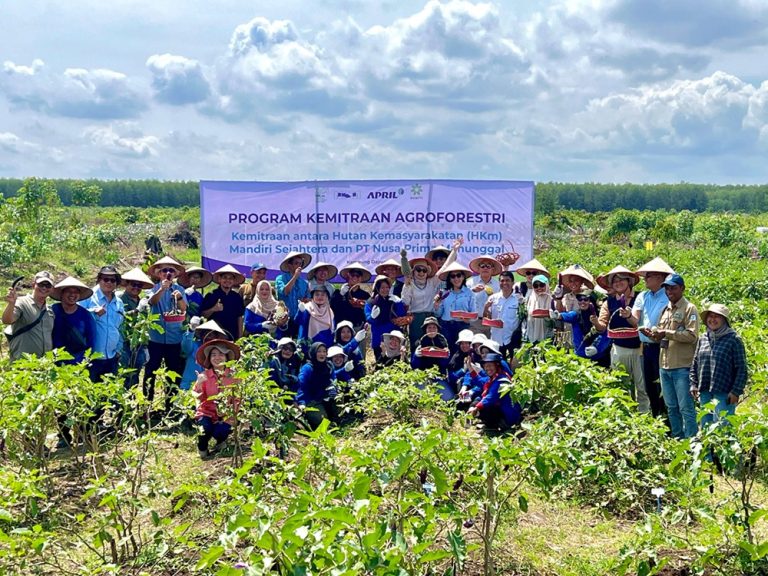
Harvest season from the Dayun Village agroforestry program
There are already examples: Eka, a tailor, who received training, is now a well-known tailor and has team members. Sukro, a farmer. Mai, a batik maker. They were not just given equipment, but their knowledge was built. That is what made them succeed.
What impact do you expect from the FSC remedy process, going forward?
I hope that the Dayun community gets an impact from this remedy. That they become more productive than they are now. Because if they are not productive, then it seems the impact is not yet maximised.
Looking forward, with capacity building and the patterns developed with PT. RAPP, my hope is for the community to become productive. So that Dayun no longer depends economically on the government.
What is your opinion of the FSC remedy process now?
For the FSC process itself, I only want it to be accelerated. Because what else is missing? Dayun Village with APRIL, with all the conflicts in the past, has in reality already resolved most of them. Only a few small points remain. The roadmap is already there. It is just a matter of finishing the small ones. So what else is missing?
Just speed up the FSC process, so the remedy benefits can immediately be felt by the community. And if you ask me from the side of nationalism, FSC should be completed soon so that there can also be additional revenue for our country.
If there are some who say the process is not transparent and ask for it to be stopped temporarily, what is your opinion?
We know that some NGOs still have objections. But I am confused about what they mean by saying the process is not transparent. If they say the FSC process is not transparent, in my opinion, we are open. FSC people who want to come to the villages are facilitated by the organization and there are no restrictions on whom they can talk to.

